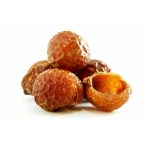It is essential to understand the ability of biologically active substances to interact and penetrate through the skin. However, the publications on this issue are few. Most of the studies are done at the in vitro level and cost a lot of money; they have not been able to explain some problems such as Structure, kinetic properties, osmosis mechanism, distribution of active ingredients on the surface. Dermal and transdermal, the interaction energy and transdermal capacity of the active ingredient. To solve the above problems, a recently used method accompanied by experimental methods is Molecular Dynamics Simulation (MDS). MDS has been used to study the effect, penetration, and diffusion of active ingredients on the skin. MDS has demonstrated the feasibility and ability to solve problems that experimental studies of skin permeability by in vitro and in vivo methods have not been possible, and the mechanism is not fully understood.
This study aimed to investigate the adsorption of the main active ingredients in tea tree oil (including 1,8-Cineole and Terpinene-4-ol) through the skin surface by molecular dynamics simulation. The study results showed a visual image of the distribution of active ingredients 1,8-Cineole, Terpinene-4-ol, their structure, and dynamic properties across the skin surface. When a single active compound (1.8-Cineole or Terpinen-4-ol) adsorbs on the skin, an increase in surface coverage leads to an increase in the peak intensity in the radial distribution function (RDF) for both 1,8-Cineole and Terpinene-4-ol. Self-diffusion (MSD) decreased monotonically for 1.8 Cineole but increased for Terpinen-4-ol as surface coverage increased. When both 1,8-Cineole and Terpinene-4-ol are adsorbed on the skin simultaneously, the results obtained are quite exceptional. The lowest self-diffusion coefficient and the smallest surface tension reduction can be achieved simultaneously at a given value of the active ingredients in the mixture. This result is quite interesting and may explain some practical problems about ISO standards regulating ingredients in tea tree oil, which currently lack a scientific basis. The study results will be able to contribute to the understanding of the interaction of the main components in tea tree oil through the skin surface.

Figure. The Surface tension reduction of the mixed system of Terpinen-4-ol and 1,8-Cineole in tea tree oil across the skin lipid layer at different percentages of 1,8-Cineole in the mixture.
Author: M.Sc. Dinh-Nhat Do








